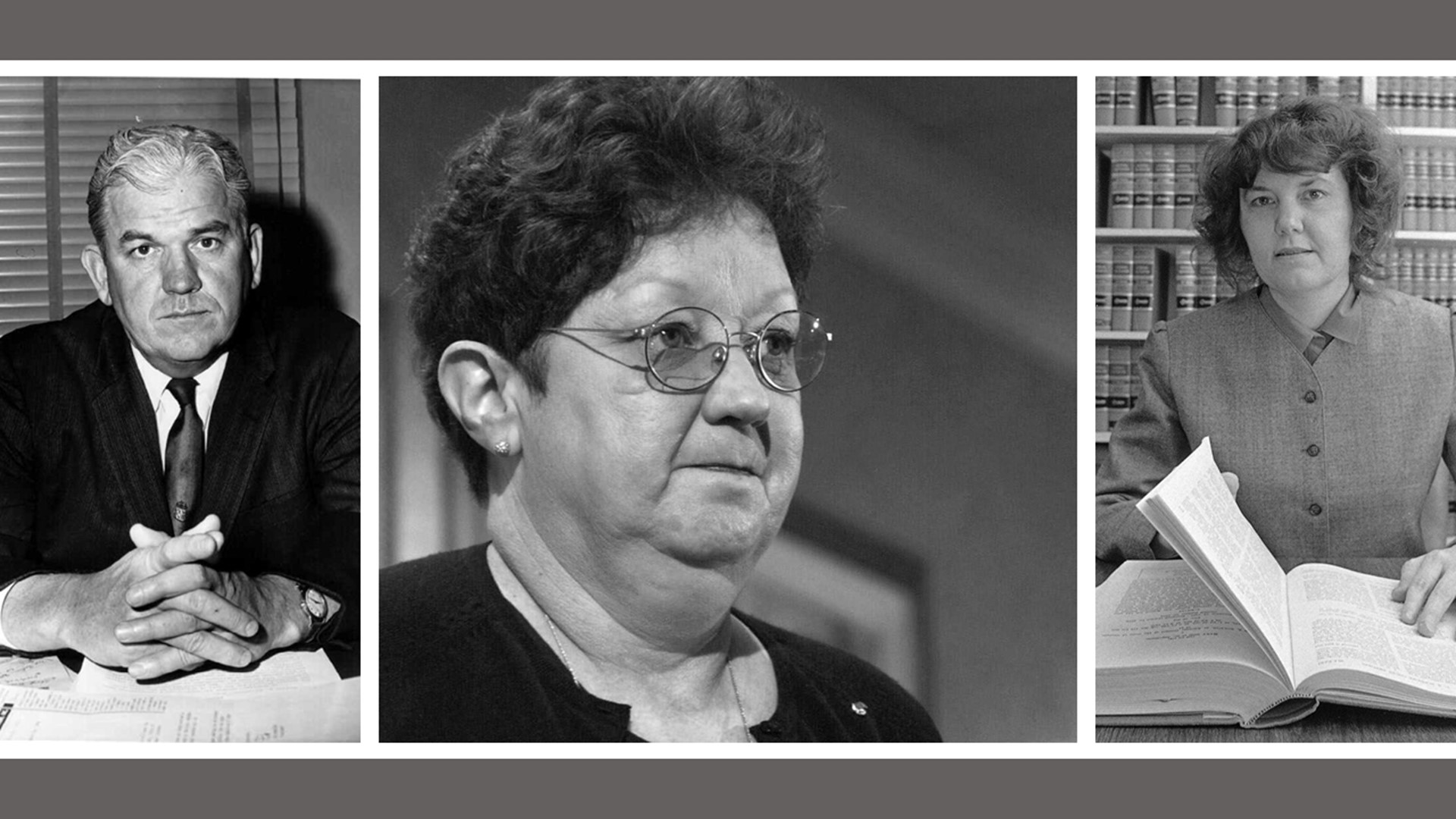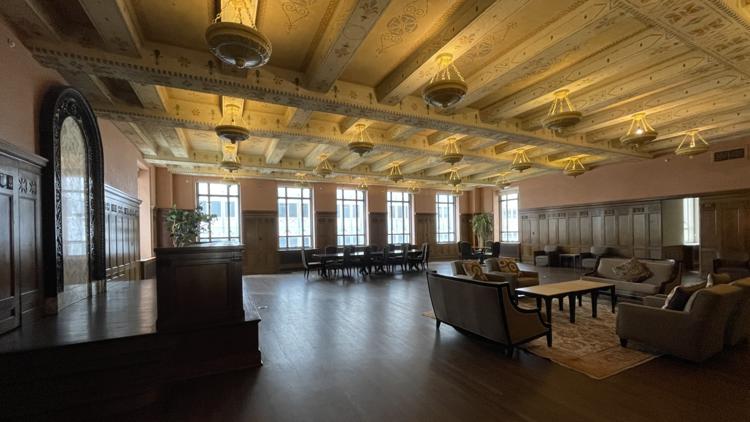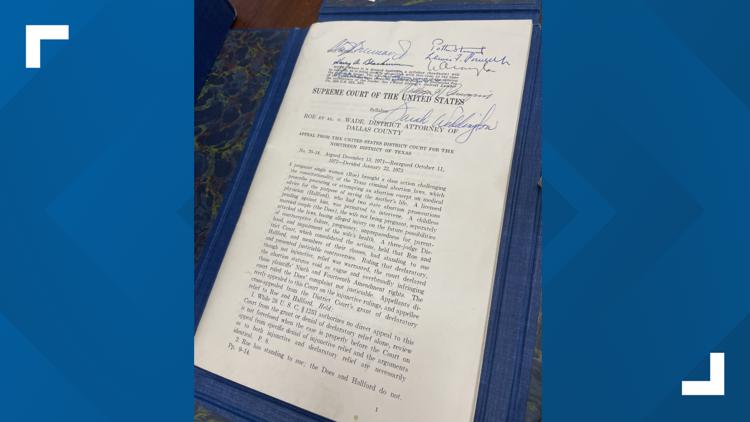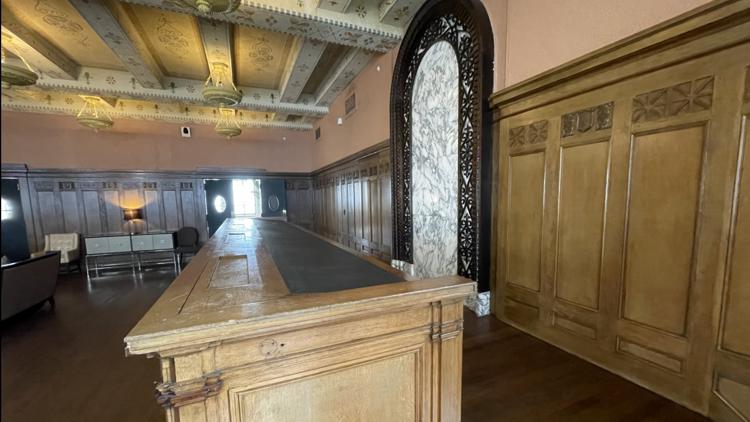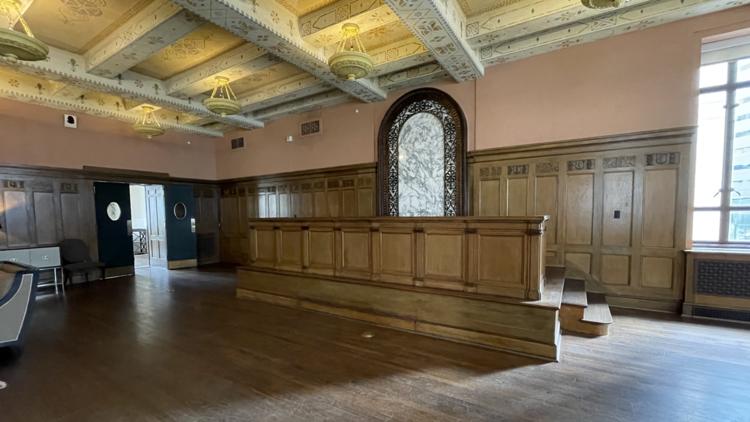DALLAS — 400 North Ervay in downtown Dallas houses apartments now.
But in 1970, it was federal court.
On the third floor of the residential building sits a well-preserved courtroom that acts as a shared community space. It’s the courtroom where a challenge to Texas abortion law was first heard – long before it changed the course of American history multiple times.
A case the nation came to know as Roe v. Wade.
In the late 1960s, a young Dallas attorney named Linda Coffee was interested in challenging Texas’s ban on abortions. She had graduated from law school at The University of Texas.
Sarah Weddington was one of her few female classmates.
Coffee recruited Weddington to join her representing a pregnant Dallas woman who wanted an abortion but had been turned away by doctors. The woman used the pseudonym Jane Roe.
They sued Dallas County District Attorney Henry Wade.
Roe v. Wade went before the U.S. Supreme Court in 1971.
Weddington was only 26 years old when she argued the case at the highest court in the land.
In 1973, justices issued their landmark decision that legalized abortion access across America.
In the 1980’s, Jane Roe revealed her identity.
Her name was Norma McCorvey.
The Roe v. Wade case started inside this Dallas courtroom
Then in the 1990s, McCorvey became a born-again Christian and started fighting against what she once fought for. She was baptized in a backyard swimming pool in Garland, rallied with anti-abortion advocates across the city, and launched her own ministry called “Roe No More.”
Dallas attracted abortion protesters and arrests outside clinics became common. Between 2000 and 2022, Texas led the way in incrementally limiting abortion access. Eventually, the old ban became law again.
Coffee is still alive.
McCorvey died in 2017.
Weddington died in 2021, after representing Austin in the Texas House and working for Jimmy Carter in the White House. She donated her entire collection of archives to Texas Woman’s University.
“The collection is so much more than Roe v. Wade. It tells the story from beginning to end. From childhood to the end of her life,” said Kimberly Johnson, senior assistant dean of special collections in university archives at Texas Woman’s University.
But the one piece that attracts the most attention is a copy of the Roe v. Wade decision signed by the Supreme Court justices who ruled on it.
“It’s not just part of Sarah’s history. It’s not just part of women’s history. It really is part of our nation’s history. Regardless of where you fall, it’s a piece of history,” Johnson said.
Almost a half-century later, a different panel of justices struck it down.

